 W
WThe Airco DH.11 Oxford was a British twin-engined biplane bomber which was designed to replace the earlier Airco DH.10 Amiens. It was designed to use the unsuccessful ABC Dragonfly engine and was abandoned after the first prototype was built.
 W
WThe Airspeed AS.39 Fleet Shadower was a British long-range patrol aircraft design that did not go beyond the prototype stage. A similar aircraft, the General Aircraft Fleet Shadower, was also built to the extent of prototypes. While the concept of a fleet shadower had some promise, the resulting designs were soon overtaken by wartime developments in airborne radar.
 W
WThe Armstrong Whitworth AW.681, also known as the Whitworth Gloster 681 or Hawker Siddeley HS.681, was a projected British long-range STOL military transport aircraft design of the early 1960s. Developed by manufacturer Armstrong Whitworth Aircraft, it was intended to be capable of achieving both Short Takeoff and Landing (STOL) and Vertical Takeoff and Landing (VTOL) performance.
 W
WThe Armstrong Whitworth Awana was a British prototype troop-transport aircraft built to meet a 1920 Air Ministry requirement.
 W
WThe Austin A.F.T.3 Osprey was a prototype British fighter triplane of the First World War. Developed by the motor car manufacturer Austin as a replacement to the Sopwith Camel, only one was built, the Sopwith Snipe being preferred.
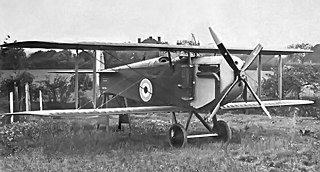 W
WThe Austin-Ball A.F.B.1 was a British fighter plane of the First World War, built by the Austin Motor Company with design input from Britain's leading fighter ace at the time, Albert Ball. Although trials with the prototype were on the whole excellent, and it could very probably have been developed into a useful operational type, the A.F.B.1 did not go into production, as both Austin's production capacity and its Hispano-Suiza engine were required for the S.E.5a.
 W
WThe Avro 523 Pike was a British multi-role combat aircraft of the First World War that did not progress past the prototype stage. It was intended to provide the Royal Naval Air Service with an anti-Zeppelin fighter that was also capable of long-range reconnaissance and bombing.
 W
WThe Avro Type 557 Ava was a British twin-engined biplane torpedo bomber of the 1920s. It was developed by Avro to meet a requirement for a heavy torpedo bomber for the Royal Air Force but was unsuccessful, only two prototypes being built.
 W
WThe Avro 720 was an in-development British single-seat interceptor of the 1950s. It was designed and being developed by Avro in competition with the Saunders-Roe-built SR.53. While at least one prototype was partially-constructed, the order for the Avro 720, and quickly thereafter the project entirely, was terminated prior to any aircraft having been completed.
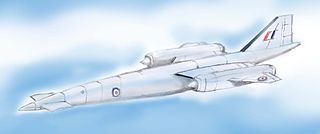 W
WThe Avro 730 was a planned Mach 3 reconnaissance aircraft and strategic bomber that was being developed by Avro Aircraft for the Royal Air Force (RAF). It had been originally envisioned as a very high-speed aircraft to perform aerial reconnaissance missions, conforming with the requirements of Air Ministry Specification OR.330. Avro subsequently decided to modify the design of the proposed 730 in order to accommodate its arming with nuclear weapons; this change therefore meant that the type would be able to perform the nuclear weapons delivery mission as well, which had been called for under Air Ministry Specification RB.156T which sought a high speed reconnaissance-bomber aircraft.
 W
WThe British Aircraft Corporation TSR-2 was a cancelled Cold War strike and reconnaissance aircraft developed by the British Aircraft Corporation (BAC) for the Royal Air Force (RAF) in the late 1950s and early 1960s. The TSR-2 was designed to penetrate a well-defended forward battle area at low altitudes and very high speeds, and then attack high-value targets in the rear with nuclear or conventional weapons. Another intended combat role was to provide high-altitude, high-speed stand-off, side-looking radar and photographic imagery and signals intelligence, aerial reconnaissance. Only one airframe flew and test flights and weight-rise during design indicated that the aircraft would be unable to meet its original stringent design specifications. The design specifications were reduced as the result of flight testing.
 W
WThe Baynes Bat was an experimental glider of the Second World War, designed by L. E. Baynes. It was used to test the tailless design that he had suggested as a means to convert tanks into temporary gliders so they could be flown into battle.
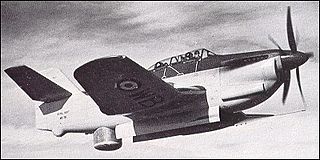 W
WThe Blackburn B-54 and B-88 were prototype carrier-borne anti-submarine warfare aircraft of the immediate post-Second World War era developed for the Royal Navy's Fleet Air Arm (FAA). They shared a conventional monoplane design with a mid-mounted inverted-gull wing and tricycle undercarriage. The pilot and observer sat in tandem under a long canopy atop the fuselage. The B-54 had a piston engine while the B-88 had a gas turbine driving large contra-rotating propellers. The radar scanner was mounted in a retractable radome in the rear fuselage, behind a long internal weapons bay. The program was cancelled in favour of the Fairey Gannet aircraft.
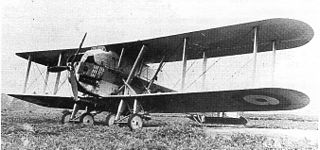 W
WThe Blackburn T.4 Cubaroo was a prototype British biplane torpedo bomber of the 1920s. Built by Blackburn Aircraft and intended to carry a large 21 in (533 mm) torpedo, the Cubaroo was one of the largest single-engined aircraft in the world at the time of its first flight.
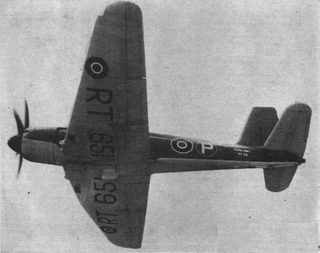 W
WThe Blackburn B.48 Firecrest, given the SBAC designation YA.1, was a single-engine naval strike fighter built by Blackburn Aircraft for service with the British Fleet Air Arm during the Second World War. It was a development of the troubled Firebrand, designed to Air Ministry Specification S.28/43, for an improved aircraft more suited to carrier operations. Three prototypes were ordered with the company designation of B-48 and the informal name of "Firecrest", but only two of them actually flew. The development of the aircraft was prolonged by significant design changes and slow deliveries of components, but the determination by the Ministry of Supply in 1946 that the airframe did not meet the requirements for a strike fighter doomed the aircraft. Construction of two of the prototypes was continued to gain flight-test data and the third was allocated to strength testing. The two flying aircraft were sold back to Blackburn in 1950 for disposal and the other aircraft survived until 1952.
 W
WThe Blackburn R.B.2 Sydney was a long-range maritime patrol flying boat developed for the Royal Air Force in 1930, in response to Air Ministry Specification R.5/27. It was a parasol-winged braced monoplane of typical flying boat arrangement with triple tailfins and its three engines arranged on the wing's leading edge. After evaluation, it was not ordered into production and no further examples were built.
 W
WThe Boulton Paul P.92 was a British design by Boulton Paul for a two-seat, turret-armed, twin-engine heavy fighter and ground attack aircraft to meet Air Ministry Specification F.11/37. Only a half scale prototype – the P.92/2 – was built and tested as check on aerodynamics before the project was cancelled in 1940.
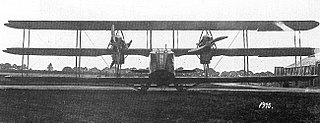 W
WThe Bristol Braemar was a British heavy bomber aircraft developed at the end of the First World War for the Royal Air Force. Only two prototypes were constructed.
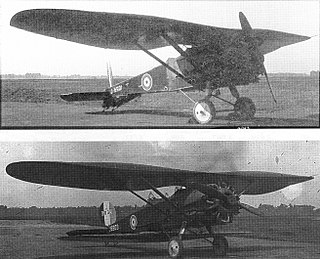 W
WThe Bristol Bullfinch was an experimental British military aircraft first flown in 1922. Variants were built as both parasol wing monoplanes and biplanes, but both versions proved unsuccessful, and only the three prototypes were built.
 W
WThe Bristol Bloodhound was a British two-seat reconnaissance/fighter aircraft designed and built by the Bristol Aeroplane Company as a possible replacement for the Bristol F.2 Fighter for the Royal Air Force. It was unsuccessful, only four prototypes being built.
 W
WThe Bristol Type 123 was a single-seat, single-engine biplane fighter built to a United Kingdom Air Ministry specification for a four-gun fighter in the early 1930s. Only one was built.
 W
WThe Bristol Type 133 was a prototype single-seat, single-engine monoplane fighter, armed with four guns, metal-skinned and with a retractable undercarriage, built by The Bristol Aeroplane Co. to an Air Ministry specification in the mid-1930s. The single example crashed before the trials commenced.
 W
WThe British Aerospace Nimrod AEW3 was a proposed airborne early warning (AEW) aircraft which was to provide airborne radar cover for the air defence of the United Kingdom by the Royal Air Force (RAF). The project was designed to use the existing Nimrod airframe, in use with the RAF as a maritime patrol aircraft, combined with a new radar system and avionics package developed by Marconi Avionics.
 W
WThe BAE Systems Nimrod MRA4 was a planned maritime patrol and attack aircraft intended to replace the Hawker Siddeley Nimrod MR2. The rebuilt aircraft would have extended the operating life of the Nimrod fleet by several decades and significantly improved the aircraft by installing more efficient Rolls-Royce BR700 turbofan jet engines to almost double the flight range. The conversion of the flight deck to a digital glass cockpit would have simplified control operations and reduced crew requirements. New detection systems were to be installed, as well as additional weapons for anti-submarine warfare.
 W
WThe British Aerospace (BAe) P.1216 was a planned Advanced Short Take Off/Vertical Landing (ASTOVL) supersonic aircraft from the 1980s. It was designed by the former Hawker design team at Kingston upon Thames, Surrey, England that created the Harrier Jump Jet family of aircraft.
 W
WThe General Aircraft G.A.L.38 Fleet Shadower was a British long-range patrol aircraft design of the immediate pre-Second World War period. The Fleet Shadower was a highly specialized aircraft intended to follow enemy naval task forces over long times and radio back position information. However, the concept produced an ungainly and ultimately unsuccessful type. The Airspeed Fleet Shadower, built to the same requirement, also did not progress past the prototype stage.
 W
WThe General Dynamics F-111K was a planned variant of the General Dynamics F-111 Aardvark medium-range interdictor and tactical strike aircraft by General Dynamics, to meet a requirement for such an aircraft for the Royal Air Force.
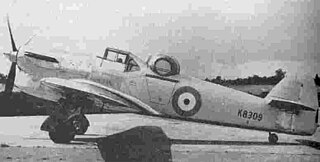 W
WThe Hawker Hotspur was a Hawker Henley redesigned to take a Boulton-Paul semi-powered four gun turret. It was designed in response to Air Ministry Specification F.9/35, which required a powered turret as the main armament to replace the Hawker Demon.
 W
WThe Hawker P.1081, also known as the "Australian Fighter" was a prototype British jet aircraft from the mid-twentieth century. The single example built was destroyed in a crash in 1951.
 W
WThe Hawker P.1103 was a design by Hawker Aircraft to meet the British Operational Requirement F.155; it did not progress further than the drawing board.
 W
WThe Hawker P.1121 was a British supersonic fighter aircraft designed, but never fully completed, by Hawker Siddeley during the mid-1950s. It was designed by a team headed by Sir Sydney Camm.
 W
WThe Hawker Siddeley P.139B was a proposed airborne early warning aircraft intended to operate from aircraft carriers of the Royal Navy. The P.139B formed part of the a major equipment procurement plan for the RN in the 1960s intended to give the service a force of new, modern carriers capable of operating air groups consisting of equally modern aircraft. However, cuts in defence spending by the British Government in the mid-1960s meant that these proposals never came to fruition.
 W
WThe Hawker Tornado was a British single-seat fighter aircraft design of World War II for the Royal Air Force as a replacement for the Hawker Hurricane. The planned production of Tornados was cancelled after the engine it was designed to use, the Rolls-Royce Vulture, proved unreliable in service. A parallel airframe that used the Napier Sabre engine continued into production as the Hawker Typhoon.
 W
WThe Kennedy Giant was a British biplane heavy bomber designed by Kennedy Aeroplanes Ltd. during the First World War. The design was an imitation of works by Igor Sikorsky, with whom the owner of Kennedy Aeroplanes Ltd., C. J. H. Mackenzie-Kennedy, had ostensibly worked prior to setting up the company. The aeroplane was a notorious failure; its size meant that construction had to take place in an open field as none of the hangars near Hayes, Middlesex, where the prototype was assembled, were large enough to house it. For its weight, the aircraft's four engines were inadequate, and the resulting under-powered aircraft could only fly in a straight line once airborne.
 W
WThe Martin-Baker MB 3 was a British fighter project with six 20 mm cannon. The fatal crash of the prototype led to the cancellation of the programme.
 W
WThe British Martin-Baker MB 5 was the ultimate development of a series of prototype fighter aircraft built during the Second World War. Neither the MB 5 nor its predecessors ever entered production, despite what test pilots described as excellent performance.
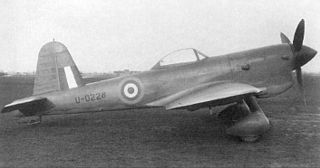 W
WThe Miles M.20 was a Second World War British fighter developed by Miles Aircraft in 1940. It was designed as a simple and quick-to-build "emergency fighter" alternative to the Royal Air Force's Spitfires and Hurricanes should their production become disrupted by bombing expected in the anticipated German invasion of England. Due to the subsequent shifting of the German bombing effort after the Battle of Britain towards British cities in what became known as The Blitz, together with the dispersal of British fighter manufacturing, the Luftwaffe's bombing of the original Spitfire and Hurricane factories did not seriously affect production, and so the M.20 proved unnecessary and the design was not pursued.
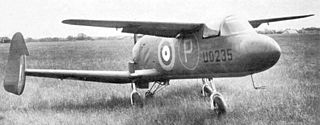 W
WThe Miles M.35 Libellula was a tandem wing research aircraft built by Miles Aircraft as a precursor to a proposed naval carrier fighter. It was named after the Libellula, a genus of dragonflies.
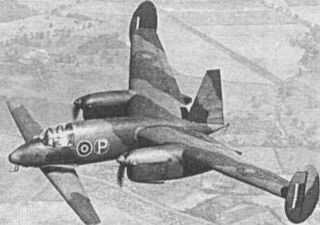 W
WThe M.39B Libellula was a Second World War tandem wing experimental aircraft built by Miles Aircraft, designed to give the pilot the best view possible for landing on aircraft carriers. A scale version of the M.39 design was proposed by Miles to meet Air Ministry specification B.11/41 for a fast bomber. The M.39B was used by Miles to generate data from which the M.39 design was improved, but the M.39 project was cancelled and the M.39B broken up.
 W
WOperational Requirement F.155 was a specification issued by the British Ministry of Supply on 15 January 1955 for an interceptor aircraft to defend the United Kingdom from Soviet high-flying nuclear-armed supersonic bombers.
 W
WThe Royal Aircraft Establishment Larynx was an early British pilotless aircraft, to be used as a guided anti-ship weapon. Started in September 1925, it was an early cruise missile guided by an autopilot.
 W
WThe Saunders-Roe SR.53 was a British prototype interceptor aircraft of mixed jet and rocket propulsion developed for the Royal Air Force (RAF) by Saunders-Roe in the early 1950s. As envisaged, the SR.53 would have been used as an interceptor aircraft, using its rocket propulsion to rapidly climb and approach incoming hostile bombers at high speeds; following its attack run, the aircraft would be able to return to its base by making use of the secondary jet propulsion instead.
 W
WThe Saunders-Roe SR.177 was a 1950s project to develop a combined jet- and rocket-powered interceptor aircraft for the Royal Air Force (RAF) and Royal Navy. It was an enlarged derivative of the Saunders-Roe SR.53, which was itself an experimental combined jet-and-rocket interceptor aircraft.
 W
WThe Short S.14 Sarafand was a British biplane flying boat built by Short Brothers. It was planned as a general reconnaissance aircraft for military service. When it was built in 1932 it was the largest aeroplane in the United Kingdom.
 W
WThe P.B.31E Nighthawk, the first project of the Pemberton-Billing operation after it became Supermarine Aviation Works Ltd., was a prototype anti-Zeppelin fighter with a crew of three to five and an intended endurance of 9–18 hours. It was first flown in February 1917 with Clifford Prodger at the controls.
 W
WThe Supermarine Seagull was a British amphibious, military flying boat and the last to be built by the Supermarine company. Design started during the Second World War but it did not fly until three years after the war had ended and the project was cancelled without it being adopted for service.
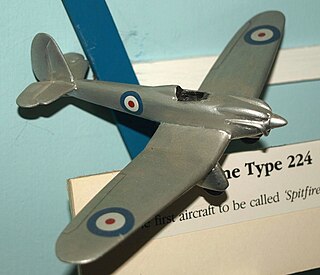 W
WThe Supermarine Type 224 was an inverted gull-wing monoplane fighter aircraft designed by R.J. Mitchell at Supermarine in response to Air Ministry Specification F.7/30, which sought a fighter for introduction to succeed the Gloster Gauntlet. It was powered by the Rolls-Royce Goshawk engine, which used an experimental evaporative cooling system, and problems with this system, combined with its disappointing performance, led to it being rejected, a contract for production aircraft eventually going to the Gloster Gladiator. It is nevertheless notable because R.J. Mitchell learnt lessons from its failure that were to contribute greatly to his success with the Supermarine Spitfire.
 W
WThe Supermarine Type 322 was a prototype British carrier-borne torpedo, dive bomber and reconnaissance aircraft of the Second World War. A single-engined monoplane, it was unsuccessful, with only two examples being built. The Fairey Barracuda, built to the same specification, would fill this role.
 W
WThe Tarrant Tabor was a British triplane bomber designed towards the end of the First World War and was briefly the world's largest aircraft. It crashed, with fatalities, on its first flight.
 W
WThe Vickers Swallow was a supersonic aircraft project headed by Barnes Wallis, working at the British aircraft company Vickers-Armstrongs. It was a wing controlled aerodyne, controlled in flight by movement of the entire wing, and was the supersonic successor to the Wild Goose project.
 W
WThe Vickers Type 432 was a British high-altitude fighter aircraft developed by the Vickers group during the Second World War. Intended to enable the Royal Air Force to engage the enemy's high-altitude bomber aircraft, it was to be armed with six cannons.
 W
WThe Vickers Type 559 was a supersonic interceptor aircraft design by the British aircraft company Vickers-Armstrongs and was their submission for Operational Requirement F.155 in 1955.
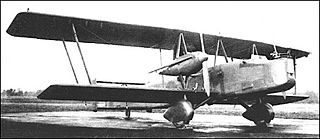 W
WThe Vickers Vanox was a British biplane bomber design intended as a successor to the Virginia for the Royal Air Force. Although it underwent extensive development, it was not successful, only a single aircraft being built.
 W
WThe Vickers Windsor was a Second World War British four-engine heavy bomber, designed by Barnes Wallis and Rex Pierson at the Vickers-Armstrongs factory at Brooklands.
 W
WThe British "Victory Bomber" was a Second World War design proposal by British inventor and aircraft designer Barnes Wallis while at Vickers-Armstrongs for a large strategic bomber. This aircraft was to have performed what Wallis referred to as "anti-civil engineering" bombing missions and was to have carried his projected 22,000 lb (10,000 kg) "earthquake bomb" to strategic targets in Germany. The Victory Bomber was considered extremely ambitious: the Royal Air Force (RAF) at that time not yet having introduced four-engine heavy bombers, and to give the necessary performance, the Victory Bomber was to have six engines and was highly specialised to its role.